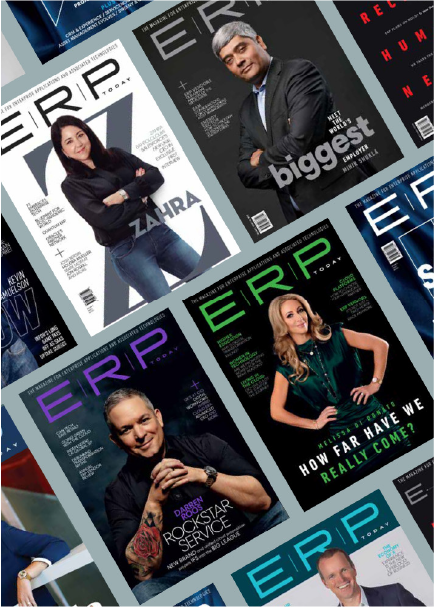It shouldn’t be hard to convince a client how an ERP program can help improve the processes of their business. Ultimately, it relies on if a business can take advantage of the full capabilities that ERP tech can offer. That part, however, is dependent on how well you can deliver genuine transformation of services for the client’s customers and employees.
We work with clients from a wide variety of sectors implementing full ERP solutions in support of wider business transformation and while the triggers for setting out on the journey differ, they all share a common desire to be better prepared for future challenges and opportunities.
We started in somewhat of a unique position as advisers on operating models, keeping track of the process of optimization. Our services have evolved since to include communication and training for change leadership and management. Over this time, we’ve noticed some themes emerging that seem to have a multiplying effect on getting the expected return investment from an ERP programmer.
The key consideration for us sounds simple but is often neglected by both the client organization and their advisers: to understand the complexity of the organization and create a genuine desire and level of comfort with the scope of the changes. If you are setting off on an expedition in unfamiliar territory, you can’t rely on assumptions; you look at the map, you consider the weather, you think about where you are planning to stop to replenish supplies.
This initial work is essential. Programs of this scale generate their own momentum; the ambition to deliver lasting benefits to the organization and those it serves comes under constant pressure from the need to maintain the pace of the program and control the overall spend while making the best use of scarce and time poor key resources. Anticipating and responding to these demands require a high degree of flexibility and innovation, rather than a standard templated plan.
So how does this happen in practice? You need to provide comprehensive support from discovery all the way to benefits delivery.
Building Trust
It is essential to identify key relationships early and not assume that the program structure or organization structure will give you all the answers you need. Building trusted relationships and credibility requires structured enquiry couched in a genuine desire to understand the underlying challenges. The ERP service provider can use these findings to tailor an approach. Once this is done, you can meet deadlines with quality deliverables and support.
Setting up success over multiple phases
Most programs have multiple stages covering different functional areas. This can include, but often isn’t just limited to: geographies, business units or even customer groupings. In every case, the ERP program is unlikely to be the only show in town. This part needs careful, open and flexible planning to avoid overwhelming any one group. Remember, the intention is to build overall confidence. Trusted relationships help all those involved raise and explore concerns and issues to adapt to the plan.
A holistic approach to change
There is always a degree of complexity to any client situation; operational, political, regulatory and sometimes differing levels of organizational maturity can all surface. Increasingly we are finding the full breadth and depth of our approach to change coming into play; drawing on expertise from operating model reviews and designs, to learning innovation, culture change and visualization to supplement core change management to help process optimization capabilities.
Success seldom comes from competent design and deployment of the technology, it’s never that simple. You will improve your chances of navigating comprehensive process changes and ways of working by establishing core change principles. More efficient methodology, improved methods, improved leadership and change capabilities; they’re all important for ensuring clients get the most out of an ERP program. Part of this work often involves challenging the organization on sponsorship and the ownership of program outcomes. By all means, hold the CIO to account for delivery of functionality to cost and time, but they are unlikely to be the ones who should be on the hook for strategic outcomes like improvements in operational productivity, cost reduction, time to market or process modernization.
Maintaining a focus on the delivery of benefits
Even with the level of effort invested by those involved in setting up an ERP program, from day one the challenges to delivery and progress are constant; from inconsistent leadership commitment, to significant variation in the needs and relative maturity of different departments, to the challenges of running business as usual activities and availability of key resources.
This is where you need to stick to core values and a considered and flexible approach; providing constructive feedback, holding yourself, delivery partners, and the client to account for meeting commitments and being prepared to flex the team to always have the right people available.
If you nail the implementation, you’ll increase the chances of not only having a fully implemented ERP, but your client will also benefit from more consistent, better controlled and more effective processes. When the benefits are picked up by the client, this new way of working will be welcomed and not resisted.




